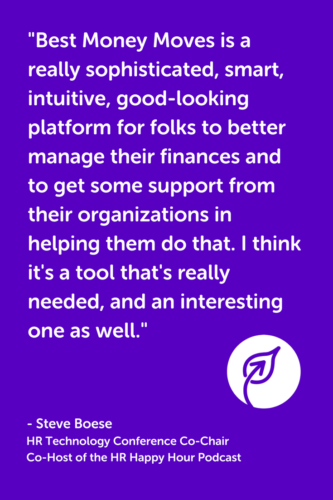In this week’s Best Money Moves roundup, we take a look at news stories and new research studies that may impact employee benefits and HR issues. We hope you find this news roundup helpful, and we’d love your feedback.
For new graduates entering the workforce, student debt is still a major cause of financial stress.
The average student debt per borrower for the Class of 2016 is $27,975, according to LendEDU’s second annual Student Loan Debt by School by State report. That number is actually down 1.5 percent from 2015, but it isn’t quite enough to lift the stress from graduates starting their careers with significant student debt.
The five states with the highest average student debt per borrower are probably not what you expect. Most of them are on the East Coast, and for all of them, the proportion of graduates who carry student loan debt is 60 percent or higher — some even reaching as high as 75 percent. Take a look:
- Pennsylvania
($35,185 average debt per borrower, 69 percent of grads have student debt)
- New Hampshire
($35,143 average debt per borrower, 75 percent of grads have debt)
- Delaware
($33,650 average debt per borrower, 63 percent of grads have debt)
- Connecticut
($32,326 average debt per borrower, 60 percent of grads have debt)
- South Dakota
($31,518 average debt per borrower, 75 percent of grads have debt)
It would be easy for employers to read the headline “student debt is down” and think of it as good news — and it is. But looking more closely at the numbers, it’s clear that student debt is a serious problem that’s not going away anytime soon. Shouldering the burden of student debt impacts your employees’ stress levels — and overall well-being — every single day.
Understanding your employees’ financial needs is the first step to helping them overcome these hurdles and stay more focused, productive and happy at work.
Financial stress is the top cause of lost productivity. Shifting the perspective of your employee benefits program to address it isn’t just good for employees, it’s good for business.
It’s almost time to make big decisions about your 2018 benefits offerings. While the possibility of health care reform generates a lot of uncertainty among today’s workforce, there are ways you can prepare them for the long term.
College costs are increasing far faster than income growth. It’s no wonder that students struggle to pay off hefty student loan bills for years afterward. Luckily, parents can help.
Voluntary benefits are growing in popularity, but many employees don’t really know or understand the options available. Five ways to educate your team.
Is your company “aging-friendly?” Almost 70 percent of employers believe their employees won’t be able to afford to retire at 65. It’s time to adapt to your older employees’ needs.
Language training improves employee engagement and retention. Research shows that 70 percent of employees with language training feel more confident in their work and interactions with their teams. Is it right for your employees?
Nearly 30 percent of the U.S. population is responsible for the care of a family member. A survey by Northeast Business Group on Health and AARP ranked caregiving as one of the top 10 employee health and wellness benefits priorities for employers. Here’s how you can assist those who assist.
Are your employees leaving money on the table? Among employees who participate in 401(k) programs, roughly one in five don’t take advantage of their full employer match. That missing money adds up.
Not all states are created equal when it comes to health care. A new report from WalletHub, 2017’s Best and Worst States for Health Care, compares states across three areas: cost, accessibility and outcome. Where does your state rank?
Have something to add? Email info@bestmoneymoves.com.






